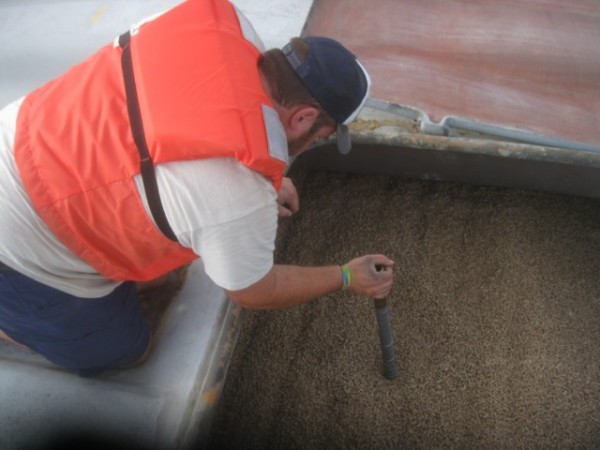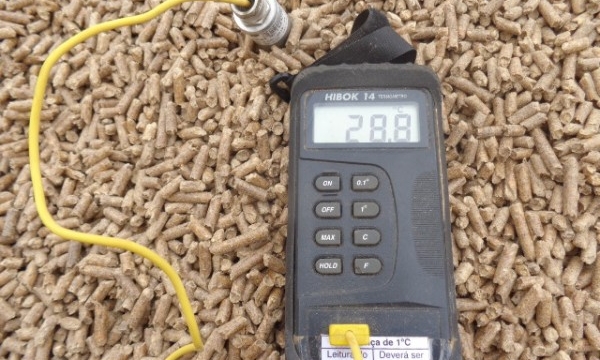Wood pellets:Temperature and moisture
An important matter is the temperature of pellets. In a case pellets are kept in a small, badly ventilated storage, an auto combustion of the pellets may occur. Temperature rise over 50-55 degr C has to be regarded as critical and such pellets should not be loaded on a vessel.
There are three ways of temperature measurements: IR gun (only spot measurement of the surface), temperature lance (up to 2 m length to measure also deeper in the pile, but only spot measurement), IR thermo camera (taking a thermo picture of the surface). All methods are only indicative. When monitoring temperatures during loading operation, Control organizations arealways giving only range of temperatures.
 When at loading temperature levels reach close to the critical level of 50 – 55°C or above, extra attention to it is given and loading may even be stopped. If “hot spots” in the cargo are observed loading is stopped immediately. Hot spots may create an auto combustion of the cargo during the sea voyage.
When at loading temperature levels reach close to the critical level of 50 – 55°C or above, extra attention to it is given and loading may even be stopped. If “hot spots” in the cargo are observed loading is stopped immediately. Hot spots may create an auto combustion of the cargo during the sea voyage.
It is very crucial to cool down pellets before loading on a vessel. If the pellets are transported directly from the production and are immediately loaded on a vessel, their temperature may be quite high and that may create ignition of the pellets. Same situation may arise when loading hot pellets into the silos in the port.
.jpg) “Wet spots” in the wood pellets cargo have to be also treated with very big caution. High moisture content is triggering in wood pellets an exothermic reaction, which may cause a fire during the sea voyage. “Wet spots” with high temperature are sometimes observed in the river barges transporting wood pellets to big seaports for loading a huge vessel. At times, there could be about 20-25 barges waiting in the port for loading of a 30.000-40.000 mt Handy size vessel. Due to condensation under the cover of the barge, water may get into the cargo and create a “wet spot”. At the arrival of the barges all covers have to be opened, the cargo to be carefully checked and “wet spots”, if any, to be removed to avoid getting of the wet pellets into the holds of the big vessel.
“Wet spots” in the wood pellets cargo have to be also treated with very big caution. High moisture content is triggering in wood pellets an exothermic reaction, which may cause a fire during the sea voyage. “Wet spots” with high temperature are sometimes observed in the river barges transporting wood pellets to big seaports for loading a huge vessel. At times, there could be about 20-25 barges waiting in the port for loading of a 30.000-40.000 mt Handy size vessel. Due to condensation under the cover of the barge, water may get into the cargo and create a “wet spot”. At the arrival of the barges all covers have to be opened, the cargo to be carefully checked and “wet spots”, if any, to be removed to avoid getting of the wet pellets into the holds of the big vessel.







